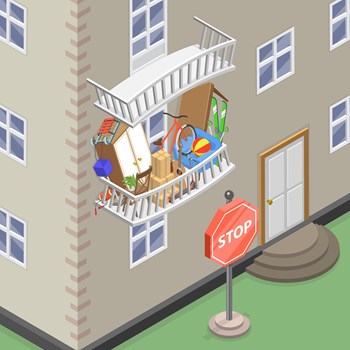
In shared interest communities like co-ops, condos, and HOAs, the promise of order and beauty is part of what residents in those communities buy when they purchase their units, even if it isn’t explicitly spelled out in the closing documents. Most multifamily buildings and associations have at least some language in their governing documents outlining the aesthetic standards to which residents must adhere. This is because the ‘curb appeal’ of clean, well-maintained, visually harmonious communities makes them naturally more attractive to prospective buyers, and boards have a duty to protect and maintain their constituents’ property values. Buyers equate visual order with overall care, and that perception has a profound impact on whether they decide to purchase a home in a given building or association.
“A potential buyer will see the lobby, the elevator, and the hallways on the way in and out of a building,” says A.J. Rexhepi, CEO of Century Management Services, Inc. in New York City. “You can have the nicest apartment in a particular building, but the aesthetics leading to and away from that unit will have a lasting impression, which ultimately affects the sales price one way or the other.”
Keeping Up Appearances
“One of the key differences between owning a single-family home and owning a condominium unit is the acknowledgement that in doing the latter, you give up some of your rights,” says Pamela Jonah, a partner at Marcus, Errico, Emmer & Brooks, a law firm based in Braintree, Massachusetts. “Condominium associations and HOAs have what is commonly referred to as an ‘architectural integrity clause’ in their bylaws. This clause is meant to promote harmony in design and prevent any activities or modifications to the exterior aesthetic of the community that could detract from the community’s overall appearance or property values.”
In high-rise buildings, aesthetic standards usually apply to the appearance of individual unit doors and windows, along with adjacent vestibules and hallways. In townhomes and more suburban communities, they typically include yards and driveways, as well. According to Jonah, “Potential areas affected may include the outside common areas like doors, stoops, decks, patios, yards, or even sometimes the inside of the unit’s windows, if they can be seen from the outside.”
In both settings, the rules are outlined in the community’s governing documents—usually the bylaws or house rules—and spell out things like whether or not residents may hang anything on the outside of their unit door, for example, or place signage or other materials in windows that are visible from outside the building. Most communities forbid things like hanging laundry out of windows, off fire escapes, or in front yard areas, as well as leaving bikes, trash bags, and other household items in shared hallways or vestibules. Many communities have limitations on the size and number of holiday displays, or whether residents can hang lights or other ornaments in windows or on doors. Suburban associations may also stipulate what color palette can be used for front doors and shutters, set limits on how tall residents can let their grass grow, or mandate that all outdoor mailboxes be the same size and style.
“Inside their apartments, owners and residents can do whatever they want,” says Daniel Wollman, CEO of Gumley Haft, a management company in New York City, “but the board is responsible for the maintenance and repair of the common areas of the building. We work with boards and design professionals on renovations all the time, selecting color palettes, carpeting, paint, and wall coverings for consistency. Hallways are a limited common element; owners and residents have no right to alter them.”
“The building has a decor they want to maintain,” Wollman continues. “They don’t want apartment doors or hallways that are inconsistent with the rest of the property. When residents start making their own alterations, it breaks the uniformity and disrupts the aesthetic the board is trying to achieve. That is why boards need to govern design choices.”
Legal Limits
Most residents would prefer not to be blinded by Vegas Strip-level holiday lights when they’re trying to sleep, or to see their neighbors’ underwear drying in the sun, so forbidding those kinds of things doesn’t pose much of a legal risk for boards.
“Generally speaking, the association’s rules in this regard will be upheld by courts if they are authorized by the association’s governing documents or law, and if they do not violate some greater public policy,” says Matthew Earle, a partner with Kates Nussman Ellis Farhi & Earle, LLP , a law firm located in Hackensack, New Jersey.
But what can cause problems is when a board forbids something a resident needs—a ramp, or an adapted front door, for example—using the community’s aesthetic rules as the justification.
According to attorney Marc H. Schneider, a managing partner with Manhattan-based law firm Schneider Buchel LLP, “Boards or committees may review, approve, or deny exterior modifications to keep a consistent design standard, but a board cannot prevent an alteration required to accommodate a resident’s disability, provided it is architecturally feasible.”
Schneider goes on to explain that under the federal Fair Housing Act, boards must permit reasonable modifications and grant reasonable accommodations when needed to make sure a resident has equal access and use of the property they call home. Boards can set neutral specs so the ramp, railing, or other alteration visually integrates with the property (e.g., color/finish), but can’t slow-walk or deny it for aesthetic reasons.
Don’t Discriminate
Another issue that is sometimes raised around aesthetic rules is residents’ right to free expression. While the First Amendment of the Constitution forbids federal, state, and local governments from curtailing free speech, co-op and condo boards are not governmental entities, and thus not bound by it. That said, boards definitely run the risk of legal exposure and discrimination claims if they apply aesthetic rules and standards unequally among their constituents. According to Earle, “Associations should proceed very cautiously when it comes to restricting expressions of religion, such as the installation of a mezuzah on a door jamb, or political speech.”
The first step to minimizing the chance for aesthetic or expression-related claims is to put your community’s relevant standards in writing, and to keep them viewpoint-neutral; in other words, limit the scope of the rules to things like size, placement, materials, and duration, and codify those rules in your governing documents. This helps guard against claims that rules are ambiguous, that they trample rights or target individual beliefs. It also keeps enforcement about conduct, rather than content.
According to federal law, communities cannot forbid the display of the U.S. flag on property an owner controls or has exclusive use of—though reasonable limits on size and placement of flags are allowed. Board-imposed rules around flags can address dimensions, mounting methods, and anything that could compromise structural or personal safety, but not the right to fly the flag itself. Political, club, and other types of flags can be restricted, but only if a community’s governing documents say so, and if the criteria are neutral and evenly applied to all residents.
Legal pros say the considerations around religious and cultural displays are essentially the same as for flags: if a board opts to regulate them at all, the guidelines should again be viewpoint-neutral—sticking to things like size, duration, and placement to focus on safety and uniformity—and provide a simple exception process for sincerely held religious practices, like the previously mentioned mezuzahs, for example.
As with so many other things, clear, proactive communication of aesthetic rules goes a very long way toward curtailing conflict over them later. Sending out a ‘door and hallway decor’ reminder in the fall and one for balconies and railings in the spring helps too. Many management firms distribute guides to residents around the holidays spelling out decoration size and mounting limits, lighting hours, and put-up/take-down dates. Some even go a step further and include photo examples of what’s allowed decoration-wise, and what’s not.
(Please Don’t) Let Your Freak Flag Fly
Having your community’s aesthetic and visual standards clearly spelled out in your governing documents and reinforced with occasional reminders around holidays and other events makes it much easier to enforce them.
If a resident hangs a motion-activated noisemaking ornament on their front door, or decides to paint their shutters fluorescent pink when your docs prohibit noisy displays and garish colors, the first step is for your manager or a board member to initiate a phone call or hallway chat with the resident.
“Because aesthetics is personal, the first step should be a personal conversation,” says Wollman. “Call the resident, explain the concern, and make sure they understand the rule and its purpose.” Then follow with a short, friendly email quoting the relevant clause in your governing documents, and giving the resident a reasonable amount of time to correct the violation. A friendly heads-up usually does the trick, but if it doesn’t, management or board may have to escalate to a formal notice to cure, and eventually to fining the resident—again, provided they have that right as per the governing documents.
Managers and realtors are in near-universal agreement that a community’s appearance measurably correlates with value; uniform, well-kept exteriors and shared interior spaces boost sale prices and reduce the time units stay on the market. While certain standards and guidelines are typical across most buildings and associations, it’s really up to each individual board and community to decide what’s right for them, and what aesthetic and visual standards they wish to promote and uphold. Your particular community might or might not be fine with allowing 12-foot vinyl skeletons on stoops or for front doors to be painted lime green, but either way, the rules saying so must be clear, consistent, and fairly upheld.



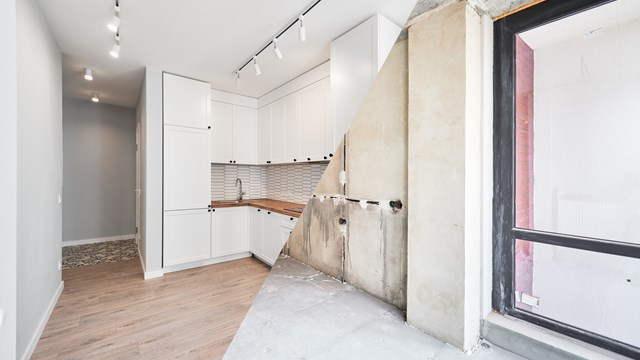
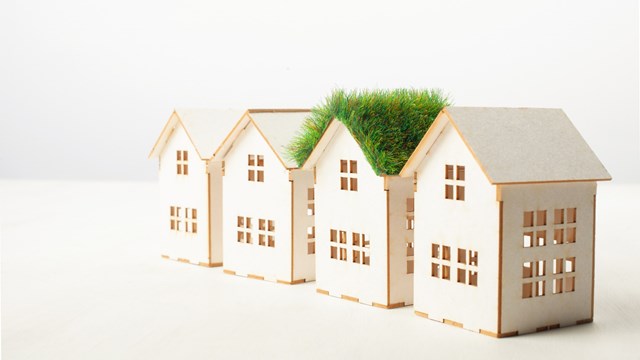

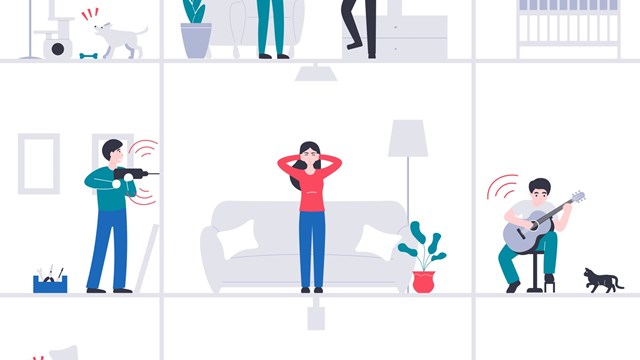

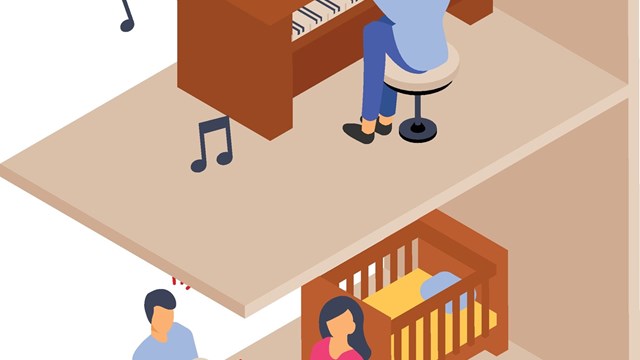
Leave a Comment